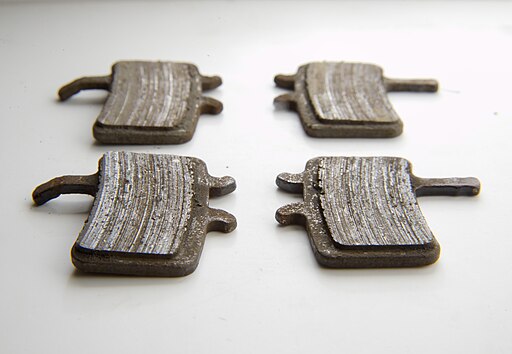Ceramic brake pads have a quieter and cleaner performance with less dust, while metallic pads offer better heat dissipation and durability.
TL;DR Ceramic brake pads Vs. Metallic brake pads
Ceramic brake pads offer excellent stopping power, reduced noise levels, and produce minimal dust. They are also known for their durability and ability to withstand high temperatures.
Metallic brake pads provide superior braking performance under extreme conditions such as heavy loads or high speeds. They are typically more affordable but can generate more noise and produce a larger amount of dust compared to ceramic counterparts.
What are brake pads?

Brake pads are an integral part of your vehicle’s braking system. They are the friction material that comes into contact with the brake rotors, creating the necessary friction to slow down or stop your car. Without them, your brakes would be ineffective and unsafe.
Ceramic brake pads
Ceramic brake pads are a type of brake pad used in automotive braking systems. They are made from a composite material that includes ceramic fibers, bonding agents, and non-ferrous fillers.
The ceramic formulation is designed to provide consistent and smooth braking performance, with low noise and reduced dust generation compared to traditional metallic brake pads.
Metallic brake pads
Metallic brake pads are a type of brake pad used in automotive braking systems. They are made from a mixture of metals, typically including iron, copper, steel, and other additives.
Metallic pads are known for their excellent heat dissipation and durability, making them well-suited for high-performance and heavy-duty applications.
Ceramic brake pads Vs. Metallic brake pads – Key differences
| Aspect | Ceramic Brake Pads | Metallic Brake Pads |
|---|---|---|
| Material Composition | Made from ceramic fibers, bonding agents, and non-ferrous fillers | Made from a mixture of metals, including iron, copper, and steel |
| Noise | Quieter operation with reduced brake squeal | May produce more noise, including brake squeal, especially in certain conditions |
| Dust Generation | Generates less brake dust, keeping wheels cleaner | Tends to generate more brake dust, resulting in dirtier wheels |
| Heat Tolerance | Performs well at moderate temperatures, suitable for regular driving | Can handle higher temperatures, ideal for high-performance and heavy-duty applications |
| Braking Performance | Provides smooth and consistent braking performance | Offers strong and consistent braking power, especially in aggressive driving and heavy loads |
| Rotor Friendliness | Gentler on brake rotors, resulting in less wear | Can cause more wear on brake rotors, potentially leading to shorter rotor life |
| Suitable Applications | Commonly used for everyday driving and light to moderate braking | Preferred in high-performance vehicles, trucks, SUVs, and intense braking scenarios |
| Advantages | Quiet operation, reduced dust, and rotor-friendly | Excellent heat dissipation and robust braking power for performance and heavy-duty use |
| Disadvantages | May not perform as well under extreme high-temperature conditions | Can be noisier and generate more brake dust |
| Use Cases | Ideal for regular driving and moderate braking needs | Suited for high-performance vehicles and situations requiring intense braking demands |
Which is better? Ceramic or metallic brake pads?
Ceramic Brake Pads
- Pros: Quiet operation, reduced dust, gentle on rotors, and stable performance for everyday driving and light to moderate braking. They are well-suited for normal driving conditions and are ideal for vehicles where low noise and clean wheels are a priority.
- Cons: May not perform as well under extreme high-temperature conditions, and they might not offer the same level of braking power as metallic pads in aggressive driving scenarios.
Metallic Brake Pads
- Pros: Excellent heat dissipation, durable, and provide strong braking power, making them well-suited for high-performance vehicles, heavy loads, and aggressive driving. They can handle intense braking demands and high temperatures without brake fade.
- Cons: May generate more noise and brake dust, and they might cause more wear on brake rotors over time.
If you value quiet operation, reduced dust, and gentle rotor wear for regular driving, ceramic brake pads are a good choice.
If you require superior braking performance, high heat tolerance, and durability for aggressive driving or heavy-duty applications, metallic brake pads are more suitable.
Image Credits
Featured Image By – Ralph from Pixabay
Image 1 By – Troy Sankey, CC BY-SA 4.0, via Wikimedia Commons








